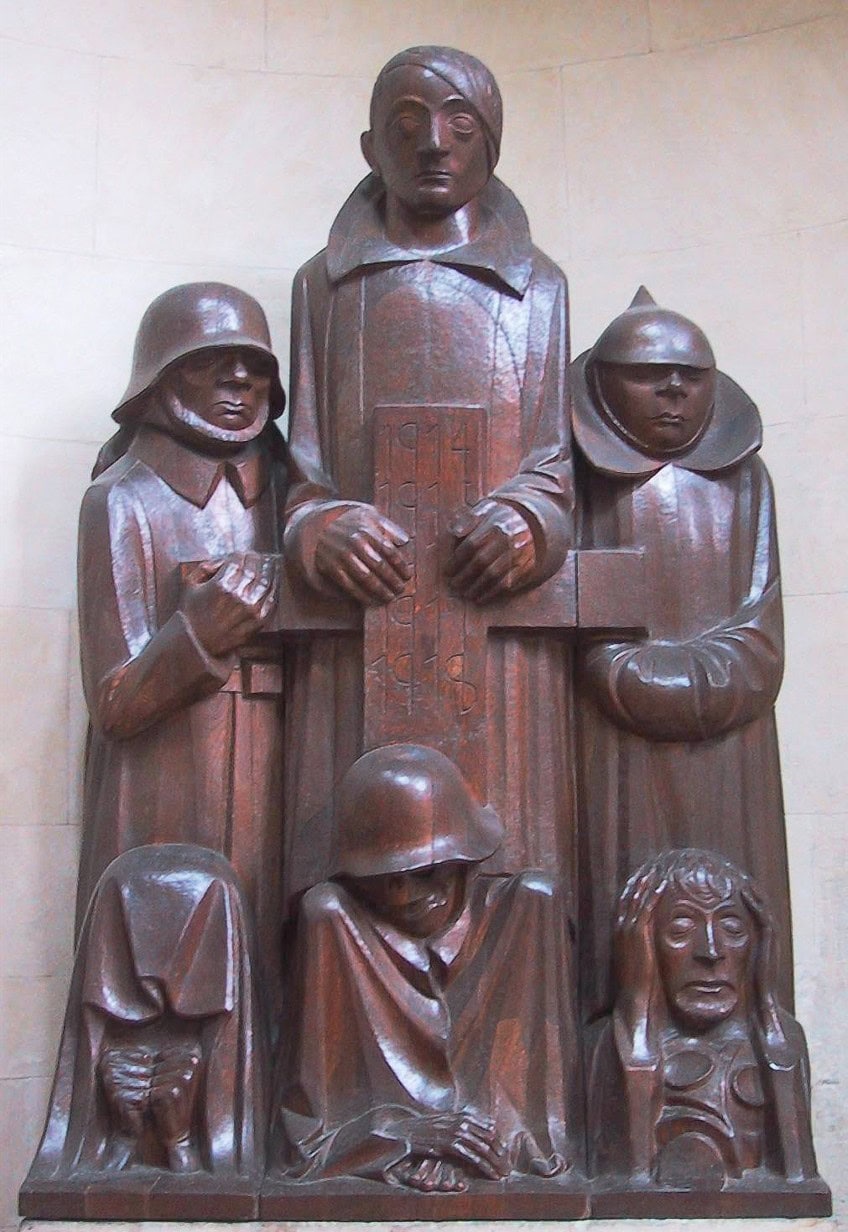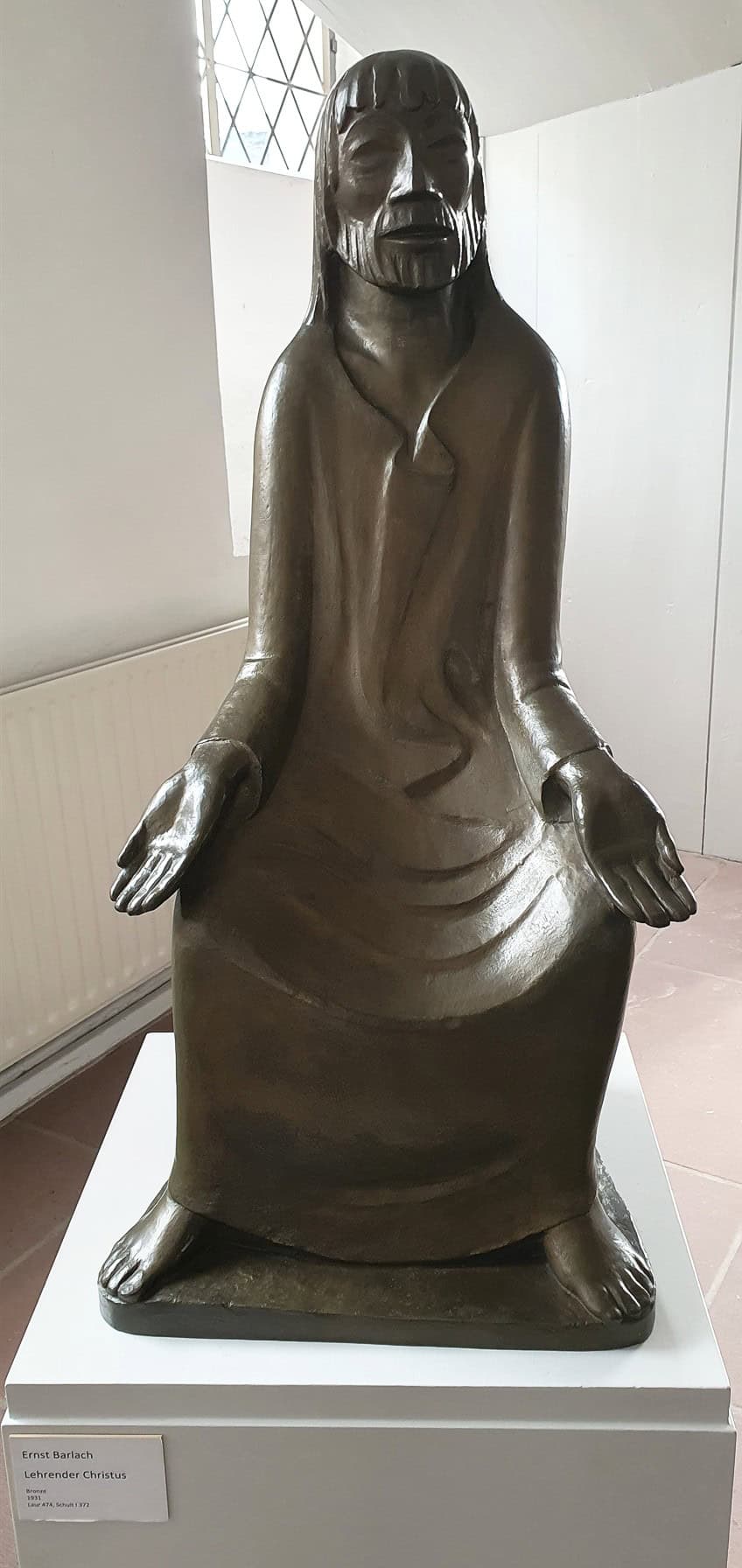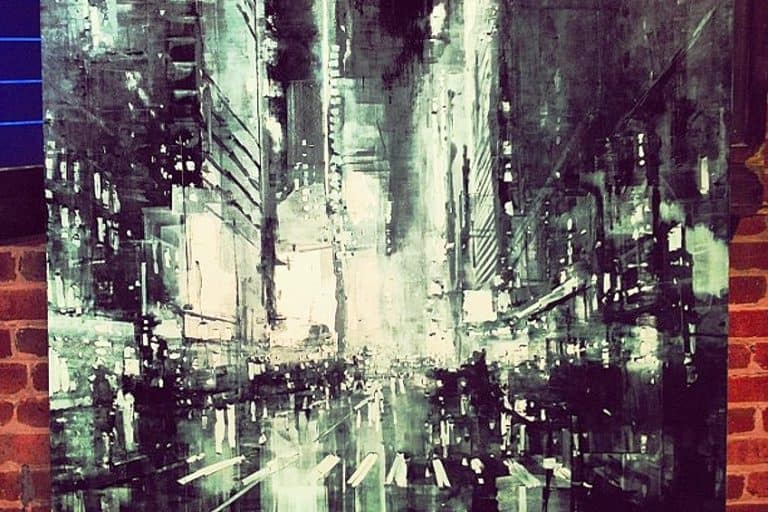Ernst Barlach – Masterful Sculptor and Expressionist Artist
Ernst Barlach was a prominent German sculptor, printmaker, and writer, best known for his expressive works that poignantly captured the human condition. His sculptures, often characterized by their simplified forms and emotional depth, reflect the hardships and spiritual struggles of the early 20th century, particularly in the context of war and social upheaval. Barlach’s work, influenced by both medieval German art and the modernist movement, frequently explored themes of suffering, compassion, and the search for meaning, making him a significant figure in the expressionist art movement. Despite facing persecution during the Nazi regime, which deemed his art “degenerate,” Barlach’s legacy endures through his deeply moving and introspective works that continue to resonate with audiences today.
Key Takeaways
- Barlach was a German artist and an influential figure in Expressionism.
- He faced Nazi persecution but remained steadfast in his artistic vision.
- His works are celebrated for their emotional depth and anti-war themes.
Early Life and Education
| Birth | January 2, 1870 |
|---|---|
| Death | October 24, 1938 |
| Place of Birth | Wedel, Holstein, Kingdom of Prussia |
| Genre of Work | Sculpture, printmaking, and writing |
Ernst Barlach stands as a significant figure in German art, renowned for his contributions as a sculptor, printmaker, and writer. His works, often imbued with religious and mystical themes, reflect a profound anti-war sentiment shaped by his experiences in World War I. Barlach’s artistic endeavors spanned various mediums, including wood carving, bronze, and graphic art, earning him a prominent place in the Expressionist movement.
Born in 1870, Barlach initially embraced Realism, but his style evolved dramatically to incorporate more expressive and emotional forms.
His poignant sculptures often portrayed peasants and religious figures, drawing inspiration from early Gothic art. Throughout his career, Barlach faced persecution from the Nazi regime, which condemned his work as degenerate. Despite these challenges, his legacy endures through his impactful pieces and their continued exhibition in places like MoMA.

Barlach’s major works, such as The Floating One and Warrior Group, continue to be celebrated for their deep emotional resonance and social commentary. His commitment to capturing the human spirit and his bold stance against war and fascism make him a memorable and influential artist.
Influences of Jugend and Art Nouveau
Barlach’s education began at the Gewerbeschule in Hamburg, where he studied the Jugendstil movement, a German variant of Art Nouveau. Jugend emphasized organic forms and intricate details, which greatly influenced Barlach’s early work. After Hamburg, he furthered his studies at the Royal Art School in Dresden. Here, exposure to German Art Nouveau helped solidify his stylistic foundations.
His brief stint at the Académie Julian in Paris introduced him to broader European artistic trends.
Development as an Artist
Returning to Germany, Barlach’s artistic journey continued to evolve. The tragic death of his father in 1884 led the family to move to Ratzeburg and later back to Schönberg. These relocations provided varied cultural experiences. In his early career, Barlach focused on graphic arts and wood carving. His work often depicted human suffering and social themes, reflecting the broader Expressionist movement in Germany.

These years played a crucial role in shaping his unique expressionist style. Barlach’s versatility soon became evident. By his mid-30s, his compositions revealed a mature understanding of form and emotion, enriched by earlier Art Nouveau and Jugend influences.
Artistic Evolution and Style
Ernst Barlach’s artistic journey showcases his mastery in various mediums, reflecting his profound engagement with the sufferings of humanity and a distinctive fusion of simplified realism with abstract features. His work in sculpture, printmaking, and expressionism remained influential throughout his career.
Transition to Sculpture
Ernst Barlach initially trained in traditional fine arts, but his shift to sculpture marked a significant turning point. Upon returning from Russia in 1906, he began creating sculptures that combined elements of Modern Gothic with expressive German Expressionism. His sculptures often depicted bulky peasant figures, reflecting the stark realities of the human condition.
Barlach’s use of wood and bronze in his works added a tactile dimension, providing physical weight to the emotional gravity of his subjects.
Printmaking and Graphic Art
In addition to sculpture, Barlach was deeply involved in printmaking. His woodcuts and lithographs displayed a similar stylistic approach as his sculptures. Like his three-dimensional works, his graphical art focused on conveying emotional depth.

Barlach collaborated with renowned figures such as Paul Cassirer, producing works that featured simplified yet potent imagery. His prints often explored themes of existential struggle and human suffering, reinforcing his preoccupation with depicting the darker aspects of life.
Embracing Expressionism
Ernst Barlach is frequently associated with the Expressionist movement, despite his personal rejection of the label. His works, which incorporated heavy drapery and large planes, often illustrated twentieth-century realism in human expressions and postures.
Barlach’s expressionist sculptures were notable for their intense drama and silent reflection.
Noteworthy pieces like Der Tote Tag (The Dead Day) emphasized emotional turmoil and pensive stillness, hallmark traits of Expressionist art. Though his anti-war sculptures led to conflicts with the rising Nazi regime and were later deemed degenerate art, his legacy in modern sculpture, graphic art, and Expressionist aesthetics remains profound and indelible.
Major Works and Exhibitions
Ernst Barlach is renowned for his impactful sculptures and evocative literary works, many of which conveyed strong anti-war sentiments. His pieces have been celebrated in numerous exhibitions worldwide, showcasing his profound contributions to modern art.
Notable Sculptures and Installations
Barlach is best known for his emotionally potent sculptures that often depicted the human condition. Notable among these is the Russian Beggar Woman, a work inspired by his 1906 trip to Russia. Another significant piece is the Güstrow Memorial for World War I victims, which was removed by the Nazis but later restored. His installation, Der Schwebende (The Hovering), in the Güstrow Cathedral stands out for its striking design. These works are on permanent display in various museums, including the Museum of Modern Art (MoMA).
Literary Contributions
In addition to his sculptures, Barlach gained recognition as a writer and dramatist. His plays, such as Der Findling, showcased his literary skill and contributed to modern German theater. His literary works often fused existential themes with a stark portrayal of human suffering and redemption. Barlach’s writing extended beyond drama to essays and poetry, reflecting his wide-ranging intellectual interests.
These contributions have cemented his legacy not only as an artist but also as a key literary figure.
Public and Critical Acclaim
Barlach’s works have been the focus of numerous exhibitions and retrospectives. The Ernst Barlach Haus in Hamburg is dedicated to his oeuvre, housing many of his sculptures, drawings, and writings. His art has been featured in various international venues, promoting critical discourse around his themes of protest and social justice.

His sculptures and literary pieces have received acclaim for their emotional depth and technical mastery. Despite controversies during the Nazi regime, which labeled his art as “degenerate,” Barlach’s work persevered and continues to captivate audiences globally. His pieces are frequently auctioned, reflecting their lasting value and significance.
Legacy and Remembrance
Ernst Barlach’s legacy is shaped significantly by his opposition to war and his persecution by the Nazi regime. His works, particularly in the contexts of memorials and recognition, continue to inspire despite the controversies and challenges faced during his lifetime.
Controversy and the Nazi Party
Barlach’s art faced intense scrutiny during the rise of the Nazi Party. Initially celebrated, his works were later condemned as “Degenerate Art” by the Nazis due to their nonconformity to the party’s ideals. They destroyed or confiscated many of his pieces.
Barlach’s sculptures and artworks, characterized by their deep emotional realism, stood in stark contrast to the propagandist art promoted by the regime.
His memorial in Magdeburg Cathedral and his contributions to Gothic-inspired realism particularly angered nationalist circles. Despite these challenges, Barlach’s defiance through art is celebrated posthumously as a strong stand against oppression and censorship.
Memorials and Tributes
Numerous memorials and tributes have been erected in honor of Barlach’s contributions to art and his anti-war sentiments. His works, like the Hamburg war memorial, reflect his evolved stance on war post-World War I. The Ernst Barlach House in Hamburg stands as a museum dedicated to his artistic legacy.

The figure of the Lamenting Woman and the Magdeburg Cenotaph are some of the notable works that commemorate his perspective on human suffering and resilience. Additionally, the relief at Rathausmarkt evokes Barlach’s unique style, featuring powerful emotional depth. These commemorations ensure that Barlach’s ideals and artistic achievements continue to inspire future generations.
Ernst Barlach’s legacy as a sculptor is defined by his profound ability to convey the depths of human emotion and the spiritual struggles of his time. Through his evocative and often somber works, Barlach captured the essence of the human experience, making him a crucial voice in early 20th-century art. Despite the challenges he faced, including the denouncement of his work by the Nazi regime, Barlach remained true to his artistic vision. Today, his sculptures stand as powerful testaments to resilience, compassion, and the enduring impact of art on society’s collective consciousness.
Frequently Asked Questions
What Artistic Movement Is Ernst Barlach Associated With?
Ernst Barlach is often linked with the Expressionist movement, though he rejected this label. His work blends simplified realism with strong abstract elements, resulting in a unique and individual style.
How Did World War I Influence Ernst Barlach’s Work?
Initially a war supporter, Barlach’s experience in World War I led to a dramatic shift in his perspective. This change is evident in his sculptures, which moved towards expressing grief and anti-war sentiments.
What Are Some of Ernst Barlach’s Most Significant Sculptures?
Some notable works by Barlach include The Avenger (Der Rächer), The Floating One (Der Schwebende), and The Frieze of the Listeners (Das Relief der Lauschenden). These pieces are celebrated for their poignant emotional depth and masterful execution.
How Did Ernst Barlach’s Work Reflect on the Human Condition?
Barlach’s art often explores themes of human suffering, introspection, and resilience. Through intense yet undemonstrative figures, his sculptures convey profound reflections on the human experience and inner turmoil.
What Was the Impact of the Nazi Regime on Ernst Barlach’s Art?
During the rise of the Nazi regime, Barlach’s works faced significant opposition. His anti-war stance and expressionist style led to his art being labeled as degenerate, resulting in the removal of his works from museums and public collections.
Isabella studied at the University of Cape Town in South Africa and graduated with a Bachelor of Arts majoring in English Literature & Language and Psychology. Throughout her undergraduate years, she took Art History as an additional subject and absolutely loved it. Building on from her art history knowledge that began in high school, art has always been a particular area of fascination for her. From learning about artworks previously unknown to her, or sharpening her existing understanding of specific works, the ability to continue learning within this interesting sphere excites her greatly.
Her focal points of interest in art history encompass profiling specific artists and art movements, as it is these areas where she is able to really dig deep into the rich narrative of the art world. Additionally, she particularly enjoys exploring the different artistic styles of the 20th century, as well as the important impact that female artists have had on the development of art history.
Learn more about Isabella Meyer and the Art in Context Team.
Cite this Article
Isabella, Meyer, “Ernst Barlach – Masterful Sculptor and Expressionist Artist.” Art in Context. September 28, 2024. URL: https://artincontext.org/ernst-barlach/
Meyer, I. (2024, 28 September). Ernst Barlach – Masterful Sculptor and Expressionist Artist. Art in Context. https://artincontext.org/ernst-barlach/
Meyer, Isabella. “Ernst Barlach – Masterful Sculptor and Expressionist Artist.” Art in Context, September 28, 2024. https://artincontext.org/ernst-barlach/.











